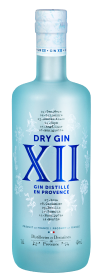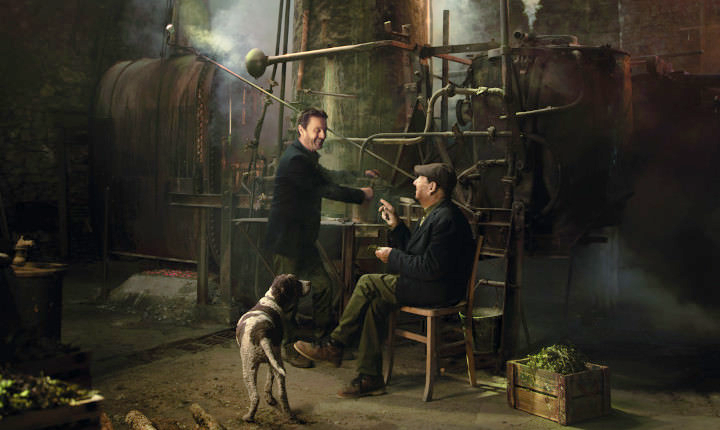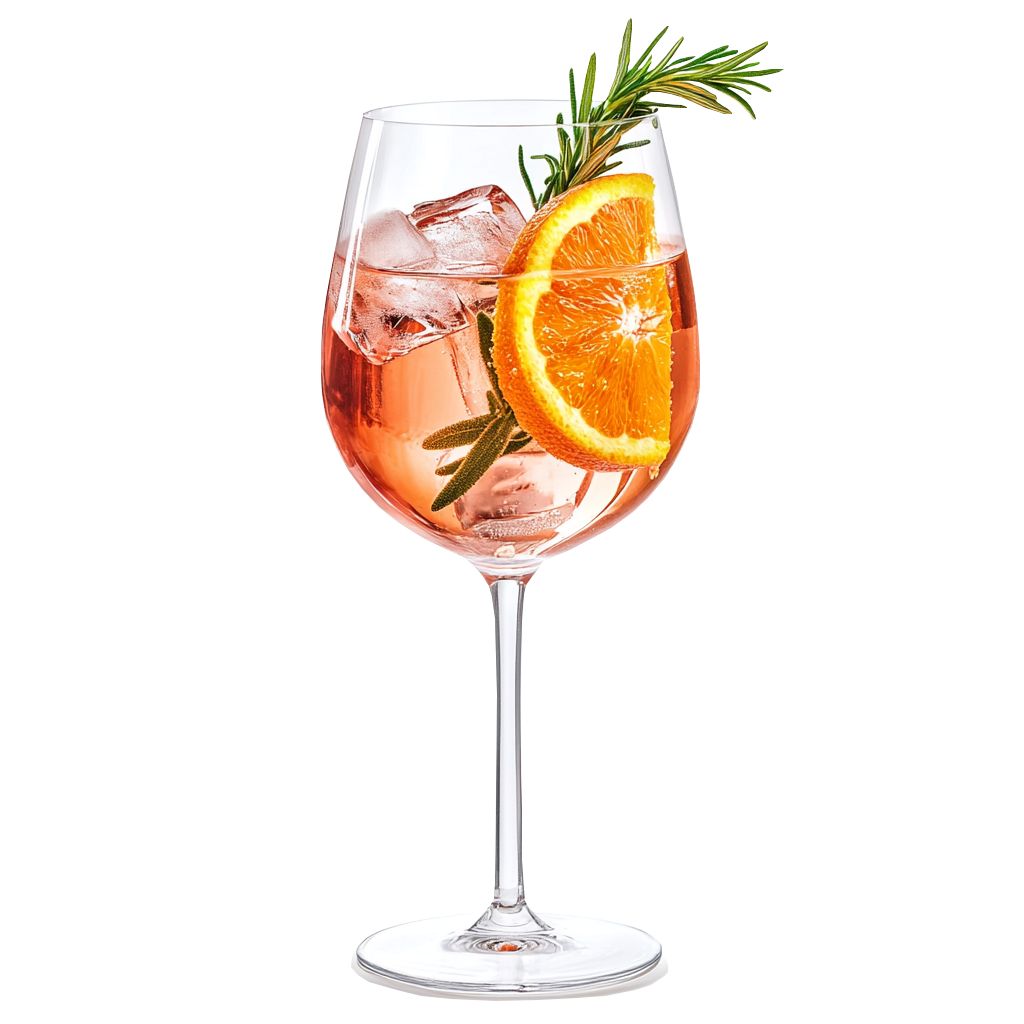La distillerie de Provence, l'art de la distillation artisanale
Depuis plus d'un siècle, notre distillerie s'attache à capturer l'âme de la Provence dans chacune de ses créations, qu’il s’agisse de notre emblématique apéritif anisé, le pastis grand cru Henri Bardouin, ou du gin artisanal, le gin XII, ou bien l’une de nos liqueurs d’exception… La distillation y est plus qu’un métier, c’est un véritable art transmis de génération en génération.
HISTOIRE ET SAVOIR-FAIRE DE NOTRE DISTILLERIE ARTISANALE
Fondée en 1898, Distilleries et Domaines de Provence a su préserver au fil des ans les méthodes artisanales qui font la renommée de ses spiritueux. Chaque bouteille raconte une histoire, celle d’un savoir-faire authentique, soigneusement cultivé au cœur de Forcalquier, un village pittoresque perché sur les hauteurs de la Haute Provence. Ici, chaque ingrédient est choisi avec soin, chaque processus est maîtrisé pour offrir une qualité irréprochable.
LA PRODUCTION ARTISANALE : UN ENGAGEMENT POUR LA QUALITÉ
La production de nos spiritueux repose sur des techniques de distillation artisanale, héritées d'une longue tradition provençale. Le thym sauvage, la verveine, et l’absinthe sont quelques-unes des nombreuses plantes emblématiques que nous utilisons pour élaborer nos liqueurs. Récoltées à la main et distillées selon des méthodes ancestrales, ces plantes incarnent l’esprit de la garrigue provençale dans chaque extrait .
LES APÉRITIFS PROVENÇAUX : UNE TRADITION CÉLÉBRÉE
Les apéritifs provençaux occupent une place centrale dans la culture locale, marquant le début de moments conviviaux et partagés. À la Distillerie de Provence, nous proposons une sélection d’apéritifs qui incarnent l'essence du terroir. Le Rinquinquin, vin de pêche emblématique, offre une douceur fruitée qui évoque les vergers provençaux. La Noix de la Saint Jean, notre vin de noix, avec ses notes épicées et chaleureuses, est idéal pour un apéritif automnal. Le Vermouth, vin de plantes aux arômes complexes, et l’Orange Colombo, vin à l’orange, apportent une touche raffinée à vos moments de détente. Enfin, la Gentiane de Lure, un vin de gentiane légèrement amer, incarne la robustesse des montagnes provençales.
GIN ARTISANAL : LA PROVENCE SAUVAGE EN BOUTEILLE
Notre gin artisanal, le Gin XII, est une véritable ode à la botanique provençale. Élaboré à partir de 12 plantes, dont le genièvre, le thym et d’autres essences de la garrigue, ce gin capture l’esprit sauvage et aromatique de la région. Que ce soit pour des cocktails raffinés ou pour une dégustation pure, le Gin XII se distingue par ses arômes équilibrés et sa fraîcheur. Il représente l'excellence du gin provençal, célébrant le savoir-faire artisanal de notre distillerie de provence.
LIQUEURS PROVENÇALES : UN HÉRITAGE DE SAVEURS AUTHENTIQUES
Les liqueurs de la Distillerie de Provence sont des trésors distillés avec soin, chacun évoquant un aspect unique de la Provence. La Farigoule, notre liqueur de thym, est une explosion de saveurs végétales, parfaite pour une dégustation après un repas. Le Génépi des Alpes et la Douce Liqueur sont des expressions subtiles et équilibrées des plantes locales, offrant une douceur envoûtante. L'Elisir Roux, quant à lui, est une liqueur aux notes complexes et raffinées, parfaite pour les amateurs de saveurs riches et épicées.
EAUX-DE-VIE ET SPIRITUEUX DISTILLÉS : L'ART DE LA TRADITION
La distillation est un art ancien, et à la Distillerie de Provence, nous perpétuons cet héritage avec des spiritueux authentiques. Le Marc de Provence, issu des meilleurs raisins de la région, est une eau-de-vie robuste et pleine de caractère. Notre Absinthe "Absente" est une réinterprétation contemporaine de l’absinthe traditionnelle, offrant une expérience sensorielle intense. Chaque spiritueux de notre gamme est le résultat d’un savoir-faire minutieux, inspiré du terroir provençal.
DÉCOUVREZ LES SPIRITUEUX DE LA DISTILLERIE À FORCALQUIER
La boutique Henri Bardouin à Forcalquier est une véritable vitrine de notre savoir-faire. Vous y trouverez une sélection de nos meilleurs produits : pastis traditionnel, gin local, liqueur de thym, et bien d’autres trésors de la distillation provençale. C’est aussi l’endroit idéal pour trouver un cadeau alcool de qualité, ou pour compléter votre bar avec des apéritifs provençaux authentiques. Que vous soyez amateur ou connaisseur, notre boutique saura vous séduire.
ATELIERS COCKTAILS ET DÉGUSTATIONS : INITIEZ-VOUS À L’ART DE LA MIXOLOGIE
Nous vous invitons à découvrir l’art de la mixologie lors de nos ateliers cocktails. Apprenez à créer des cocktails apéritifs composés de gin artisanal, ou de l’une de nos liqueurs fruitées,ou d’autres spiritueux de la distillerie. Ces ateliers sont aussi l’occasion de déguster nos produits, d’en découvrir les subtilités, et d’apprécier l’authenticité de nos apéritifs. Rejoignez-nous pour une expérience immersive dans la culture provençale, où chaque cocktail raconte une histoire savoureuse.
POURQUOI CHOISIR LA DISTILLERIE DE PROVENCE ?
L’AUTHENTICITÉ ET LA QUALITÉ AU CŒUR DE NOS SPIRITUEUX
À la Distillerie de Provence, nous nous engageons à produire des spiritueux de la plus haute qualité, en respectant l’environnement et en valorisant le terroir provençal. Nos produits sont le fruit d’un savoir-faire familial transmis de génération en génération, combinant tradition et innovation pour offrir des apéritifs et liqueurs uniques.
Notre distillerie est bien plus qu’une entreprise, c’est une histoire de famille. Depuis des décennies, nous perpétuons les techniques de distillation artisanale tout en innovant pour répondre aux attentes des amateurs de spiritueux. En choisissant nos produits, vous soutenez une entreprise locale, fière de ses racines et de son héritage.
Cette page d'accueil vous offre un aperçu de ce que la Distillerie de Provence a à offrir : des spiritueux, enracinés dans le savoir-faire et le terroir provençal, élaborés avec passion et savoir-faire. Que vous soyez à la recherche d’un apéritif provençal, d’un gin artisanal, ou d’une liqueur fruitée, vous trouverez dans notre distillerie une expérience gustative authentique et inoubliable.















